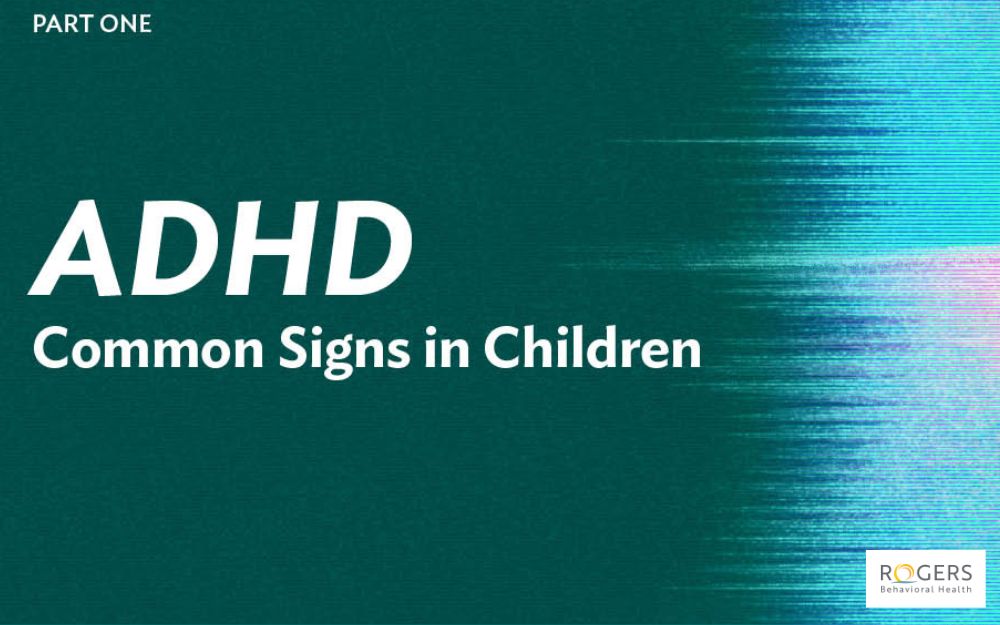What you need to know about suicide that could save a life
Updated on 08/31/23 10:04:pm

Share this article:
The statistics* on suicide are alarming:
- On average, there are 132 suicides every day.
- Suicide deaths increased by 2.6% between 2021 and 2022.
- 1.7 million adults attempted suicide in 2021.
“September is National Suicide Prevention Month, so it’s a great opportunity to bring this leading health crisis into the spotlight,” says Nancy Goranson, PsyD, attending psychologist overseeing clinical care for children and teens at Rogers' West Allis campus. “The pandemic is adding a lot of stressors for everyone,” she adds. “Some children are feeling hopeless and uncertain about their futures, and maybe even feeling unsafe. Community and national events are affecting their mental health, too. The good thing is, there are more conversations happening around mental health.”
Misconceptions about suicide
“It’s important to know what’s true,” says Katie Brindowski, therapist in the DBT Mental Health Recovery program for early adolescents in West Allis. “Even with all the information about suicide, there are common misconceptions.”
Brindowski shares five common suicide myths:
- Young children don’t die by suicide. People think children don’t know what they’re doing or couldn’t possibly take their lives, but suicide is actually on the rise for kids as young as five to 12 years old.
- Talking about suicide increases the chances of it. Research shows that is false. Talking about it allows a person who may have suicidal thoughts to rethink their options and get support, and it reduces the stigma around it.
- Suicide happens without warning. Someone thinking about suicide often gives clues either verbally or through their behaviors. Sadly, these can be overlooked or dismissed.
- People who take their lives are selfish. People who die by suicide just want their suffering to end and see it as the best or only option for doing that.
- High achievers aren’t at risk. The perfectionists, the kids who ace every test and class, the star of the basketball team —they are often seen as mentally and emotionally stable. Sometimes, holding yourself to high standards all the time or living in a high-achieving family can feel like a lot of pressure. It can be easy to miss the warning signs with this group.
Brindowski says it’s important to know the behaviors that could indicate someone is considering suicide.
Warning signs of suicide
- Talks about suicide
- Writes about suicide
- Writes goodbye letters
- Does online research about suicide
- Engages in self-harm or reckless behavior
- Loses interest in usual activities, withdraws
- Expresses feeling like a burden
- Experiences a loss or threat of a loss
- Changes in personal hygiene
- Changes in sleep
- Experiences mood swings
- Stockpiles medication
- Experiences “amazing reversal” of depression to suddenly being at peace
“If someone you love is thinking about suicide, listen and be present,” says Brindowski. “Don’t be afraid to ask questions. Validate how they’re feeling, offer support, and remove any means to suicide like chemicals, medications, and sharp objects which significantly reduces the risk of suicide.”
Dr. Goranson adds, “Don’t panic or get upset. Stay calm. Approach the conversation with open curiosity. Say things like. ‘Tell me more about it. It sounds like you have been feeling sad for a while.’ Let the person guide the conversation. Don’t make them feel guilty for talking about it. Instead, say you’re glad they told you, give them hope for the future that things will get better, and assist them in getting help immediately.”
Resources for suicide prevention
Dr. Goranson shares several resources for suicide prevention:
Trans Lifeline: 877-565-8860
LGBT National Help Center: 888-843-4564
How Rogers can help
Rogers’ multi-disciplinary teams offers compassionate care for children, teens, and adults across the country. Call 800-767-4411 or request a free screening online screening request.
“Our team of experts specializes in helping kids who are depressed and have suicidal thoughts,” says Dr. Goranson. “Our evidence-based treatment has demonstrated outcomes that work. Our staff listens, and help normalize what kids are feeling. They’re not uncomfortable or afraid of talking about the issues the kids come in with. Children see other kids at different stages of healing, they see others who have overcome, and it gives them hope.”
Brindowski says, “We know COVID-19 is taking a toll. It’s been a tough time for everyone. We are here, and we want to help.”
*The statistics cited in this blog were updated on 9/9/2022.



